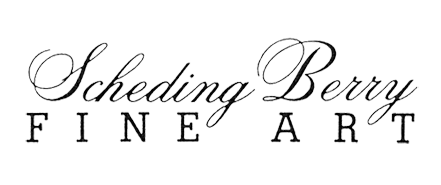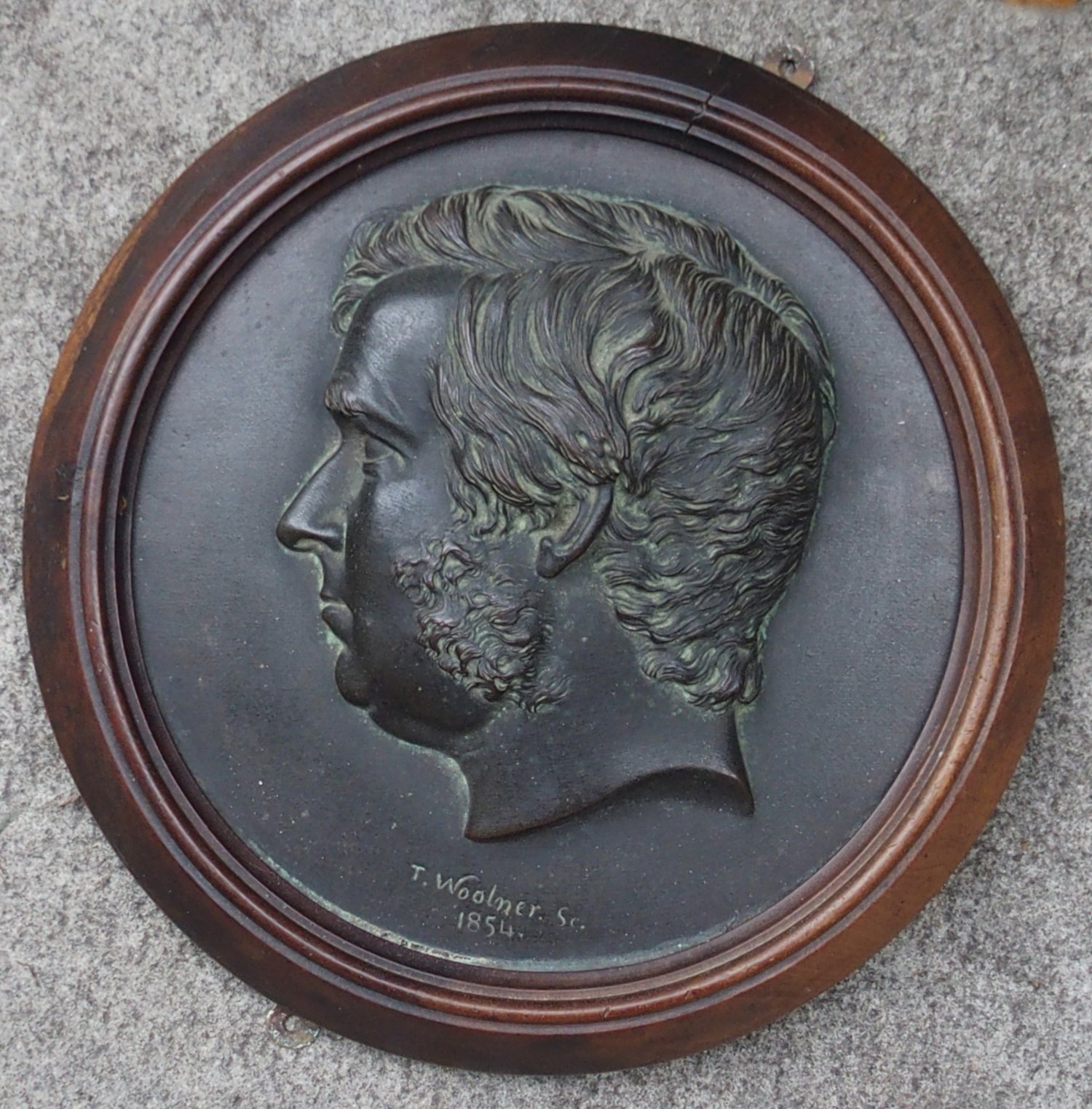Thomas Woolner
Sir Charles Nicholson
circular bronze relief portrait medallion
signed and dated to lower edge `T. Woolner. Sc. 1854, inscribed in ink to verso `Sir Chas Nicholson`.
21.5
cm
SOLD
Provenance:
The collection of Sir John Nicholson, 3rd Baronet, grandson of Sir Charles Nicholson and his wife Sarah.
Literature:
Amy Woolner, ed. Thomas Woolner R.A., Sculptor and Poet: His Life in Letters, 1917, pages 65 & 337
The statesman, physician and man of business Sir Charles Nicholson (1808-1903) was the first Vice-Chancellor and second Chancellor of the University of Sydney, a position he obtained in 1854. He was speaker of the first legislative council of New South Wales three times between 1843 and 1856. He was also a man of letters, and together with William Charles Wentworth, helped to establish the University of Sydney. The Nicholson Museum in the University of Sydney, to which he donated his own collection, was named after him, and he has been described as Australia`s first great collector and patron of the arts and sciences. The sculptor and poet Thomas Woolner was a prominent member of the Pre-Raphaelite Brotherhood, and contributed poetry to its first journal, The Germ, in 1850. He was also the subject of the famous Pre-Raphaelite painting by Ford Madox Brown entitled The Last of England (1855). He sailed to Australia in 1852, to seek his fortune in the Gold Rush, though without success.
“So this gold digging is dead unless successful: in all other occupants labour tells directly or indirectly sometimes to one’s profit, but in this if you fail obtaining gold there is life wasted, time, loss of friends, money, enjoyment, positive harm is effected.”
In the notoriously difficult field of sculpture, those who managed to survive by practising their art, turned a living from portrait busts and funerary monuments. But for the ambitious, like Woolner, the ultimate goal was to produce Ideal works based on episodes from history, the Bible, literature, poetry or mythology, since these were the most prestigious of all genres in both painting and sculpture.16 During the 1840s in England, Woolner had devised a number of sculptural projects that expressed the artistic principles of the Pre-Raphaelites which won him critical approval but failed to net him patrons. In 1851, he entered the national competition for the Wordsworth monument for Westminster Abbey, Wordsworth being revered by the Pre-Raphaelites as one of the great poets of nature. Woolner's elaborate composition, consisting of groups of figures in the round, amounted to fanciful subjects, such as Red Riding Hood and his personal favourite, a wicked, flitting Puck, of c.1844, from Shakespeare's A Midsummer Night's Dream. These figurines could be recreated as required in clay, plaster or bronze or, as noted in the case of Red Riding Hood, mass-produced in porcelain for a much wider market. Between 1846 and 1852 prior to his departure for Australia, Woolner had also executed a series of six portrait a Pre-Raphaelite manifesto in sculpture. Though the composition was highly commended, the commission went elsewhere, and this disappointment appears to have influenced Woolner's decision to seek his fortune in Australia. Along with his more ambitious projects, Woolner had also created a series of small imaginative figures of medallions. It seems that his most immediate source of influence was the sculptor, Bernhard Smith, who shared his London studio and who had begun producing these low relief profile portraits after his return from France. Woolner declared that he had adopted the genre ‘to get a living with’, but he also stated that in each case the highest standards of accuracy and careful research and execution were maintained. Among them were profile portraits of the eminent literary figures, Tennyson and Carlyle. Woolner undoubtedly hoped they would have market appeal due to the Victorians' fondness for collecting sculpted busts and images of their favourite heroes. Woolner always made sure he got on with the great and the good, and over the course of his career he produced a portrait gallery in sculpture of many of the brightest stars of British culture. His motive was more than just political, however, since he was seriously interested in literature; an amateur poet in his own right, he had work published in the Pre-Raphaelite magazine, The Germ. His admiration for Tennyson, one of the literary giants of the period, was perfectly sincere. Through his friendship with Dr. Godfrey Howitt of Melbourne, Woolner instead obtained commissions for a number of medallion portraits, and was subsequently able to secure further commissions from Sir Charles Nicholson in Sydney. At least five medallions were commissioned by Nicholson: Sir Charles Nicholson himself, the University donor Thomas Barker, Sir James Martin, Chief Justice and Member of the University Senate, William Charles Wentworth and Sir Charles Augustus Fitzroy, Governor of the Colony. Woolner`s portraits in bronze represent one of the earliest forms of Pre-Raphaelite sculpture, and the attention to physiognomy and phrenological character evident in this work attest to the Pre-Raphaelite concern for a scientific `truth to nature`.


